Settlement & indents in mattresses; how to stop your new mattress sagging
Mattresses are primarily based on a support unit which is then topped with comfort layers. It is when these comfort layers start to compress that beds suffer from dips and sags; known as mattress settlement. In a quality mattress, these will be natural fibres, whereas in cheaper entry-level models this may be polyester or foam. Either way, these comfort fibres will start to settle once you’ve slept on the bed for a while as they compress into position.

This means that, initially, body impressions would be more visible as the mattress fillings directly beneath the user are compressed. This article explains why settlement and indents in mattresses can be reduced by following some simple steps.
- What is mattress settlement?
- Why is my mattress sagging?
- How to stop your mattress dipping
- Top tips to fix mattress settlement
- Mattress types and how to avoid dipping
- How mattress upholstery will affect sagging
What is mattress settlement?
Mattress settlement is where the fillings of a mattress compress and ‘settle’ into position. As you sleep in the same space most nights, mattress settlement tends to occur quicker in that space than in the rest of the mattress. It’s like only sitting on one side of the sofa; when you try the other side it may feel plumper or firmer.
Mattresses with very soft layers such as Wool, Alpaca or Cotton, are more prone to settlement. Therefore, constant twisting and rotating of the mattress whilst new is extremely important to even out the wear pattern to reduce and prevent undue settlement.

Even Vi-Spring, one of the premier mattress manufacturers, gives essential information advising that initial body impressions are not a fault of the mattress but an intrinsic part of the mattress bedding in period.
In our experience, settlement can be a cause for unnecessary concern. It shows itself more in mattresses with a bigger span area, such as king-size or super king sizes.
Why is my new mattress sagging?
Mattress sagging is usually caused by lack of mattress care, where the sleeper uses the same part of the bed each night, thereby causing the fibres to eventually sag from overuse.
It stands to reason that, as you are only sleeping in an area the width of your body, the central and perimeter areas will be underutilised. After a few weeks, it may look like the sleeping areas are wearing quicker than the rest of the mattress, but constant turning, rotating and using different parts of the sleeping area will (in time) equal out this pattern.
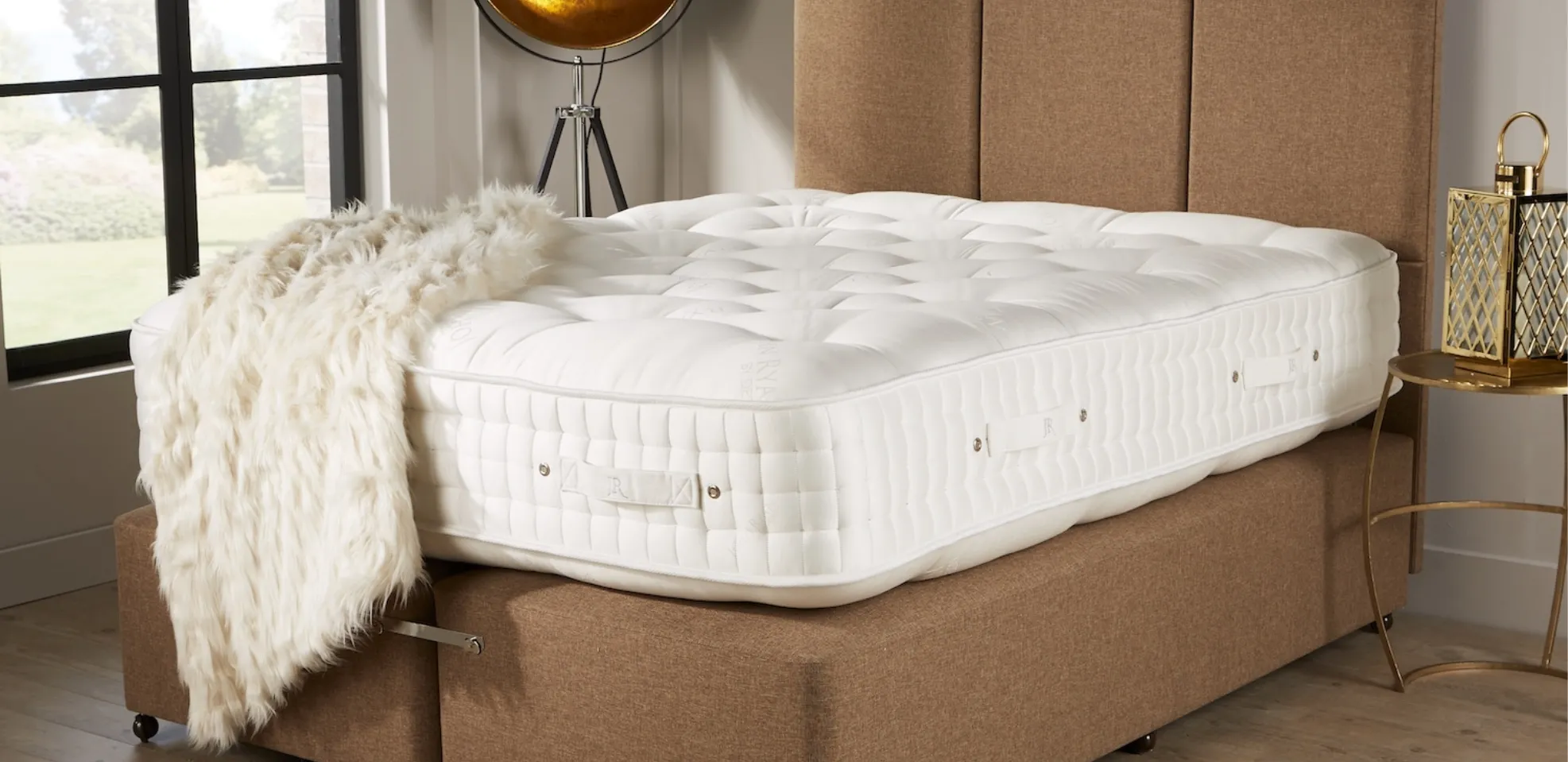
Funnily enough, cheaper end mattresses with minimal layers of wadding tend not to show body indents, as there is so little wadding and upholstery to indent that you tend not to notice it more readily. However, the lack of upholstery causes all sorts of long term problems as there’s usually not enough comfort layers to provide relaxation during the night.
Of course, cheaper end mattresses will more than likely be polyester-based and, as polyester has a low rate of recovery and not a very long lifespan, you will soon be primarily be sleeping directly on the spring unit.
Whilst this is completely natural and expected, there are tips you need to be aware of to help prevent this settlement from turning into lumps and bumps. A few years ago the National Bed Federation (NBF) & Sleep Council noted that retailers were not informing customers that all new mattresses, in particular, high-end mattresses were subject to settlement. So it’s important to take steps to prevent excessive mattress settlement.
How to prevent mattress settlement
Firstly not many people realise that the underlying layers used in the mattress will have an effect on how they settle. Pillow tops are the absolute nightmare construction method as you can’t avoid settlement. Once the permanently attached soft pillowtop compresses, there’s no way to turn or remove this. So we always advise steering well clear of these types of models.
Turning and rotating your mattress monthly is essential.

Mattresses that are full of natural fibres will need more care and attention than cheaper foam-based models but they will last significantly longer. Sometimes, this gap can be up to 15 years vs 3 years before a foam mattress has completely compressed.
Foams as a bridging or insulating layer are extremely resilient to compression. With our Origins range we always add an inch layer of Reflex foam above the spring unit, as the resilient bridge/dampener between the springs and the softer primary comfort layers. If this was not there, then when you are compressing the comfort layers you will be doing so directly on the springs with absolutely nothing taking the strain. You need to bear in mind the fact all foams are far warmer than natural fibres, so if you’re a hot sleeper you need to bear this compromise in mind.
Absolute high-end mattresses with natural fibre upholstery, rather than polyester, utilise components such as Horsehair, Mohair, Coir, Bonded Wool and Cotton, Cashmere blends. These offer unparalleled levels of lasting comfort and breathability.

These fibre layers are entirely ‘forgiving’ and move in conjunction with the sleeper and the spring unit. These components are also completely and utterly fail-safe, meaning that there is no possible way they can be depressed to such a level as to not return to their original loft. However, they do need some assistance to help even out their settlement and shake them back to life during the life of the mattress.
Top tips to avoid mattress settlement
- Turn and rotate your mattress monthly (even if it looks fine).
- Avoid Pillowtop Mattresses as these can’t be turned.
- Buy a 2-sided mattress and avoid ‘No turn’ models.
- Add an additional natural fibre topper to help take the strain of the top layers.
- Change your sleeping position and side to help even out wear.
How mattress types are affected differently by settlement
The type of mattress you buy will have a huge effect on the speed in which they will settle and the options you have to try and reduce this. The table below will show you what to expect and how to fix it. Bear in mind that the time until dipping is if nothing is done to maintain or look after the mattress.
| Mattress Type | Fibre Type | Expected Lifespan before potential dips if not maintained | Can the settlement be prevented? |
|---|---|---|---|
| Open Coil / Traditional Bonnell Spring Mattress | Synthetic | 2-3 Years | Partly with the addition of a topper and turning monthly |
| Memory Foam / Mattress in a box Mattress | Synthetic | 3-4 years | Not usually - they are one sided so can only be rotated |
| Hybrid Foam Mattresses | Synthetic | 5-6 years | Not usually unless 2-sided |
| Latex Foam Mattresses | Synthetic/Natural | 8-10 years | Yes turning and rotating |
| Synthetic Pocket Spring Mattresses | Synthetic | 8-10 years | Yes by turning & rotating |
| Natural Fibre Pocket Spring Mattresses | Natural | 10 Years + | Yes by turning & rotating |

How mattress fibres affect the settlement
The general conception of all mattress builds is that there’s progressive support from the spring unit upwards. This is to say that the components used directly beneath the primary soft comfort layer should be gradually increasing in tension.
It then becomes quite obvious that, as the mattress has a soft comforting primary layer such as Wool (for example), the likelihood of compression indents within the bedding in period can be quite noticeable. This is especially true when compared to a firm layer of thin foam, which has no real space to compress, as found in cheaper mattresses. We have a detailed article on the techniques of Mattress Construction.
With some layers of Wool, which are included entirely for softness and comfort, they are blended with other fibres. This is because, on their own, they have relatively little support or resilience properties. This is where layering of Wool, with Horsehair or Mohair, is a great way to help keep its loft and reduce settlements.
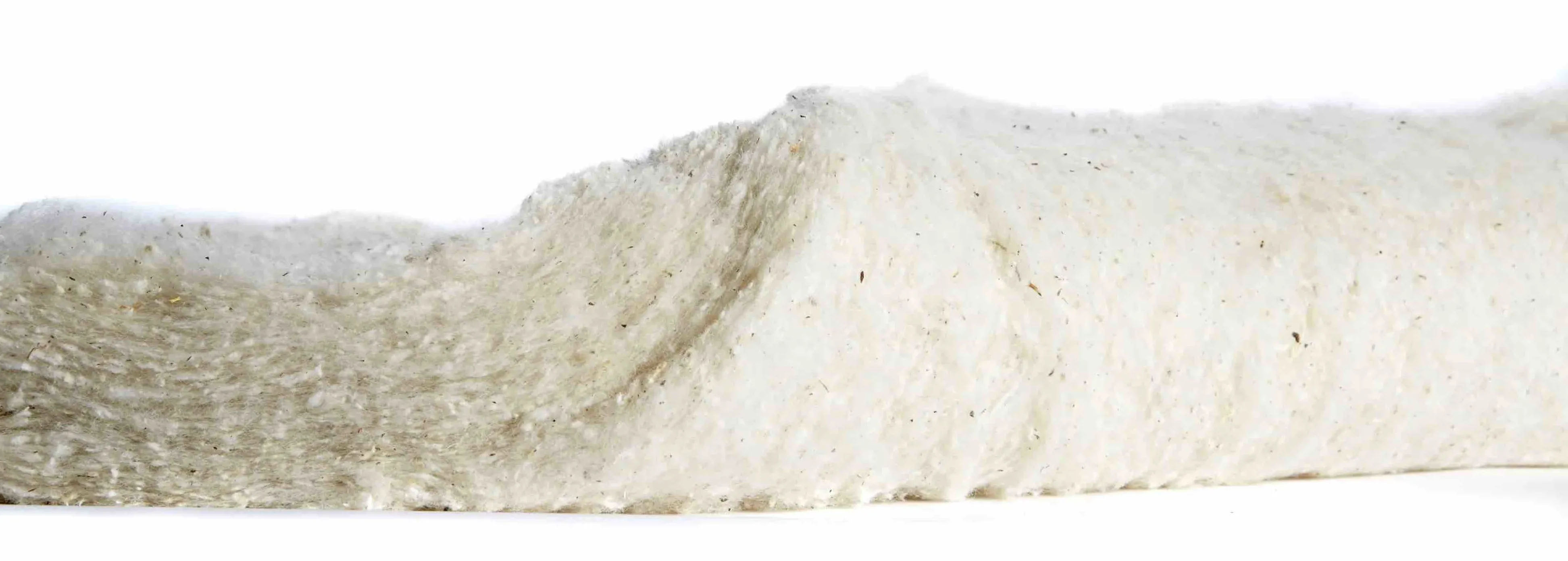
The addition of Cotton to the Wool also helps increase its robustness with little detriment to the comfort properties. The layers directly below the very top layers must offer an increasing degree of support to prevent you from sinking right into the spring unit.
- Natural fibres – will compress quickly, but last far longer and are breathable.
- Synthetic fibres – compress less quickly, but retain heat and have less bounce back over time.
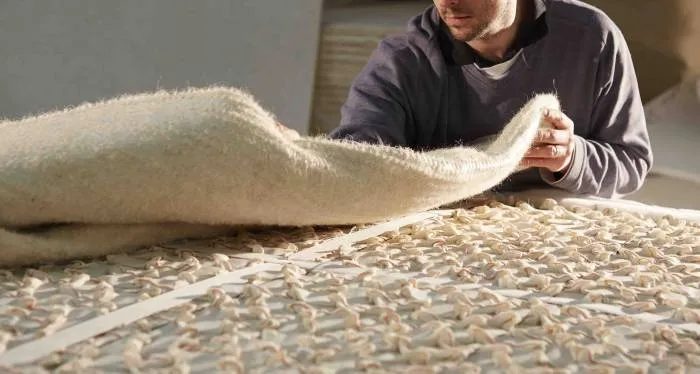
As a good example is Vi Spring’s top of range model, the Magnificence, which utilises a final comfort layer of 1200gsm blended real Shetland Isle Fleece Wool and Cotton. This particular model is backed up with underlying layers of additional Wool (600gsm), and then more supportive elements such as Mohair (200gsm) are introduced. All of this represents the comfort layers.
If you take this particular build to be amongst the epitome of mattress construction and high-end fibres, you still need to be aware that even a mattress at this high level of mattress build will have an element of depression from the wool as it is being bedded in. Thus it too will require monthly turning and rotating.
To help you assess what fibres you may want in a mattress and their feel, there’s a comprehensive table below to help.
| Upholstery Layer | Fibre Type | How it will feel? | Price Point |
|---|---|---|---|
| Polyester | Synthetic | Soft | Cheap |
| White Fibre | Synthetic | Soft/Medium | Cheap |
| Recycled Fibre / Eco Fibre | Synthetic | Medium | Cheap |
| Memory Foam | Synthetic | Medium/Firm | Mid Price |
| Igel / Hybrid Foam | Synthetic | Medium/Firm | Mid Price |
| Polycotton | Synthetic/Natural Blend | Soft/Medium | Mid Price |
| Linen | Synthetic/Natural Blend | Medium | Mid Price |
| Wool (Pure) | Natural | Soft/Medium | High-End |
| Cotton (Pure) | Natural | Soft | High-End |
| Silk | Natural | Soft | Expensive |
| Horsehair | Natural | Medium | High-End |
| Mohair | Natural | Medium/Firm | High-End |
| Hemp | Natural | Medium | High-End |
| Latex (100% Natural) | Natural | Medium/Firm | High-End |
| Coir | Natural | Firm | High-End |
| Flax | Natural | Firm | High-End |
| Coarse Cashmere | Natural | Firm | High-End |
| Bamboo | Natural | Super Soft | Expensive / Exclusive |
| Horsetail | Natural | Firm | Expensive / Exclusive |
| Alpaca | Natural | Soft | Expensive / Exclusive |
| Cashmere (Pure) | Natural | Soft | Expensive / Exclusive |
| Vicuna | Natural | Super Soft | Expensive / Exclusive |
The bottom line is that mattress settlement and indentations are going to occur in all mattresses, especially if the mattress is not turned and rotated. If a person was five foot wide and 6 foot high, the depression and settlement would be equalised over the entire mattress. However, people are not the same size and shape of a mattress and, therefore, body-shaped impressions will occur. With our anti-mattress sagging tips, they can be reduced and sometimes avoided depending on your mattress type. With a quality 2-sided mattress, you really do have the most options when it comes to getting the longest lifespan out of your new mattress, and we advocate that you always choose a mattress than can be turned compared to one that can’t.
We additionally always advocate the use of toppers to allow this settlement to happen slowly over time, with the topper taking the brunt of your body weight rather than the primary layer of the mattress.
If you need more advice please give our small expert team a call on 0161 437 4419 where we can help advise specifically for your mattress type.
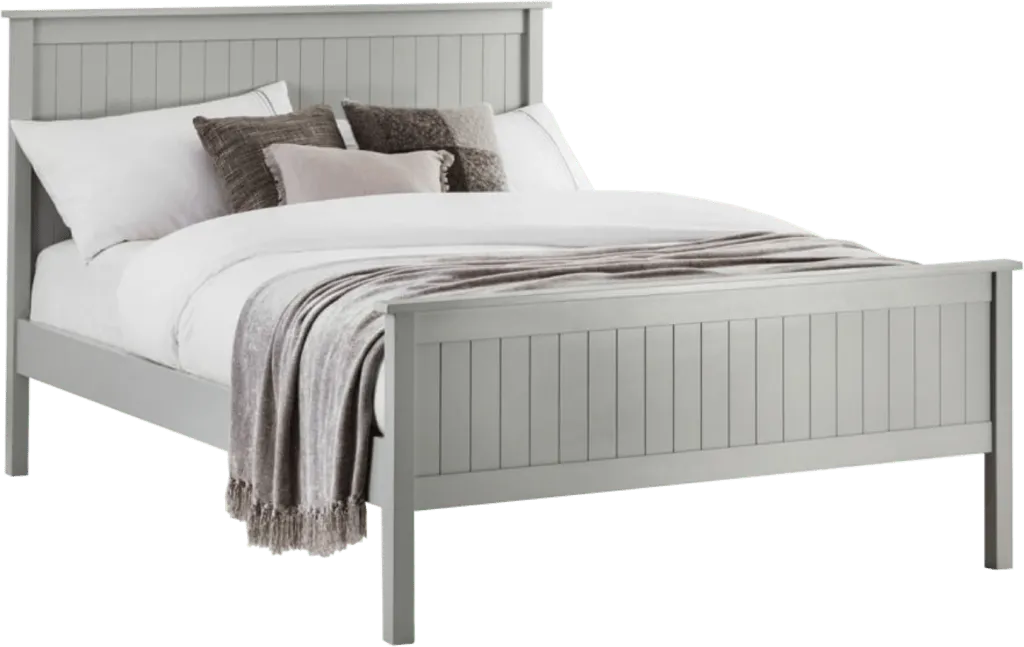
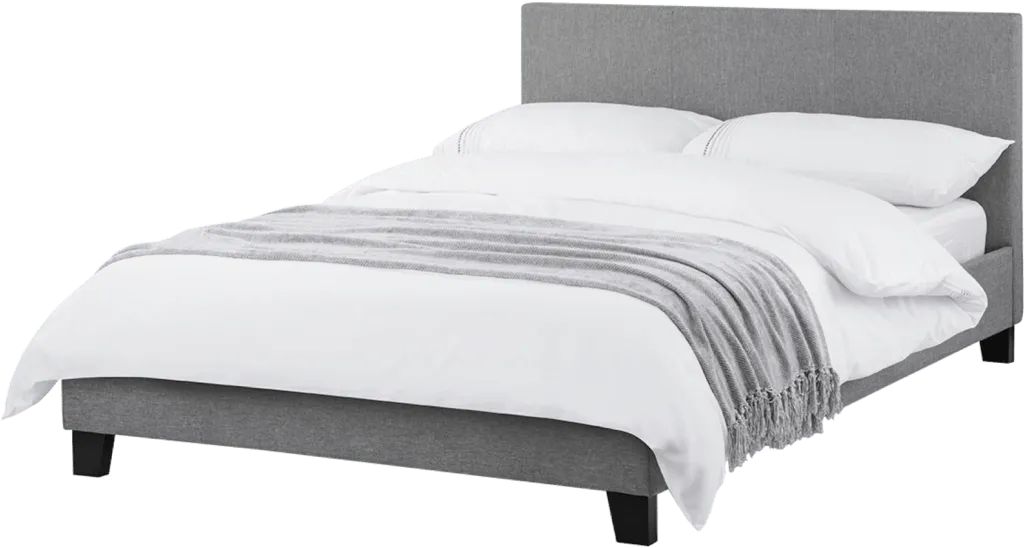
Ask us a question.
There are over 6000 questions and answers submitted by you on all questions about mattresses and bed problems. Enter a keyword such as Vi Spring, John Lewis beds, bad back or Memory Foam and see if your question has already been answered.
You can filter popular questions by the categories below. If you can’t find an answer, ask a new question below. We aim to respond to all questions within one working day.





































 Mattresses
Mattresses  Take our mattress quiz
Take our mattress quiz  Contact
Contact  About us
About us 


